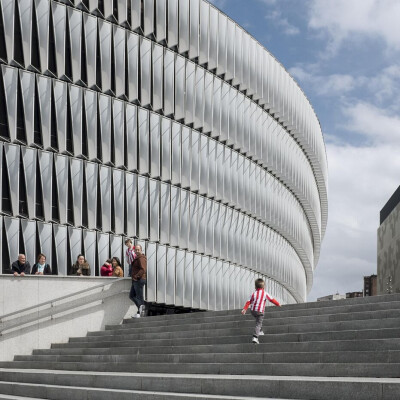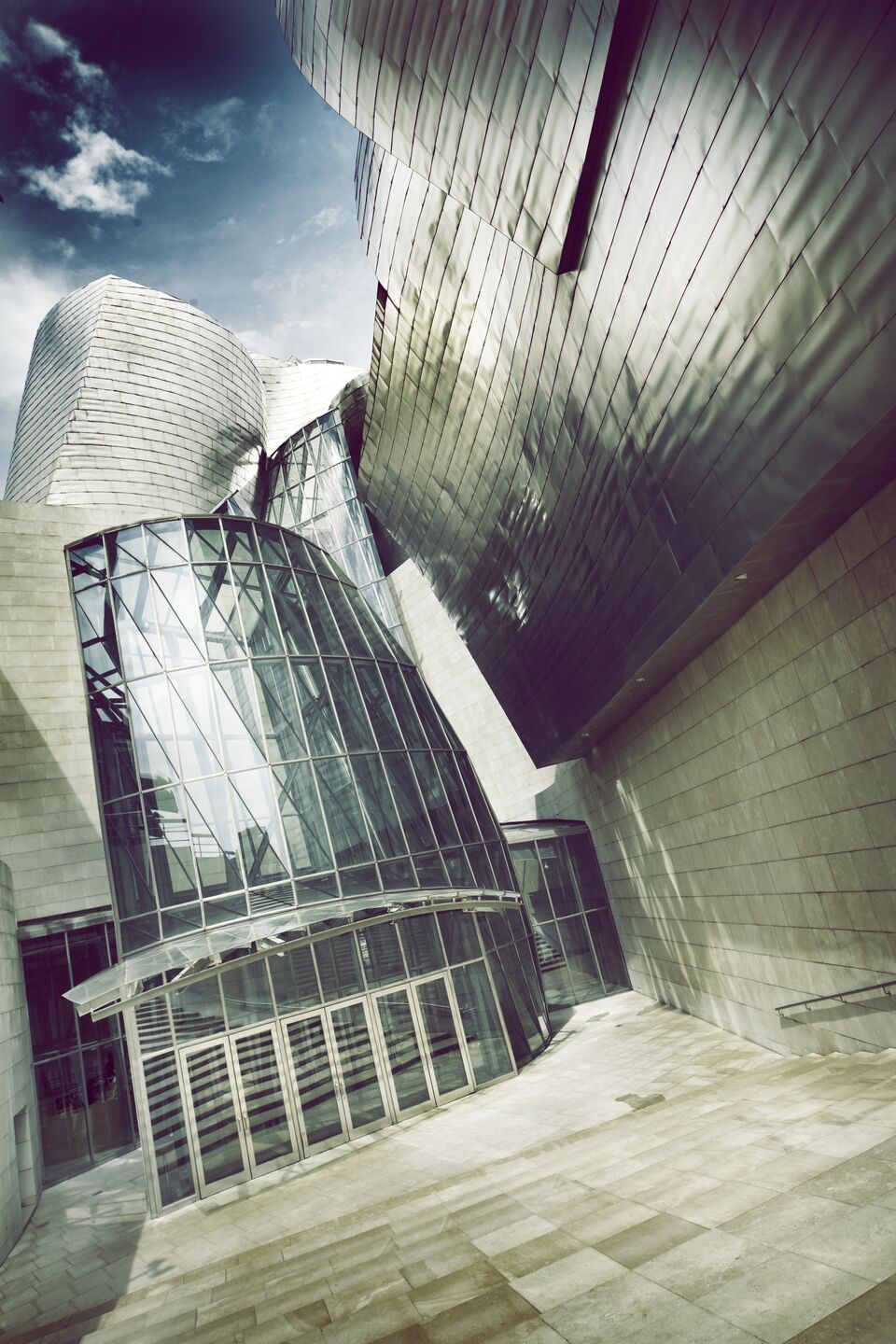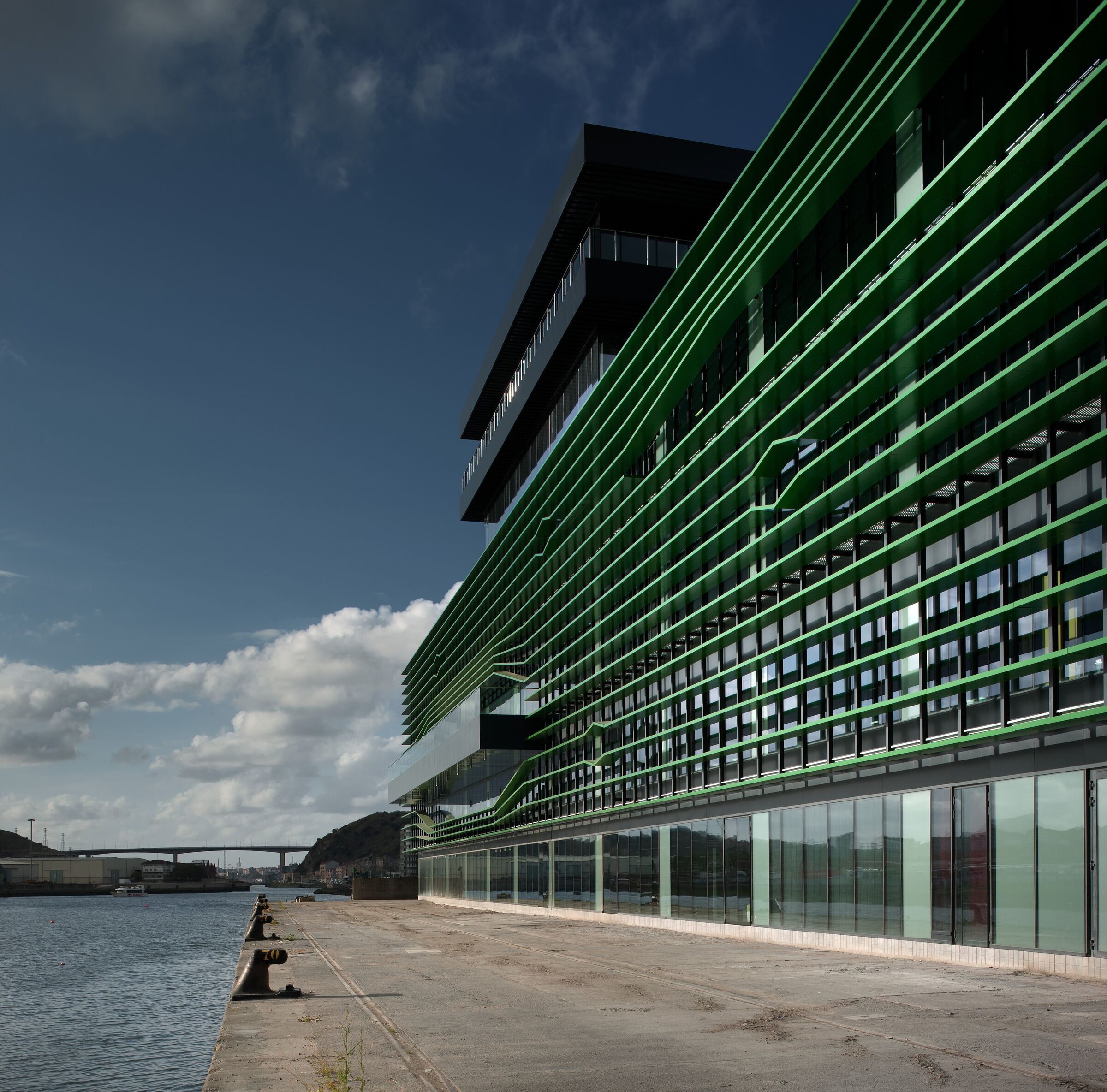"I would say that I’m an architect—an unusual one—who joined an engineering company with the goal of changing it, and in turn, letting the company change my soul."
Iñaki Garai of IDOM on how architecture transforms the immaterial into the material


00:00 / 00:00
Welcome to the Archello Podcast, architecture’s most visual podcast series. Listen as Archello's Paris-based Editor in Chief, Collin Anderson, sits down with architects to discuss their careers and projects. Each audio episode is accompanied by a rich visual storyboard which listeners can use to follow the discussion.
Introducing Iñaki Garai, Director of Architecture at IDOM
In this episode, Archello is in Bilbao with Iñaki Garai, Director of Architecture at IDOM, one of Spain’s most influential firms.
IDOM has played a key role in Bilbao's recent evolution, from working as the local architect on the transformative Guggenheim Bilbao, to completing other iconic projects like the San Mamés Stadium.
Listen and scroll as Garai discusses his IDOM’s deep connection to Bilbao, and his thoughts on contextual design both in the Basque Country and globally.
On Garai's path to IDOM and the company's transformation
Founded in 1957 by Rafael Escola, IDOM began as a purely engineering-focused firm. But Escola, along with key figures like Felipe Prosper and Fernando Quejeta, saw the need to introduce architecture into their services. This transition was driven by an open-minded approach and an understanding of the needs of their clients.
Garai was born in Biscay and was introduced to IDOM by one of his professors, Juan Carlos Valerio, when he was a young architecture student. "He was more a poet than an architect," Garai recalls, describing how the idea of a poetically minded architect joining an engineering company intrigued him. The opportunity to merge the worlds of architecture and engineering was compelling, and in 1992, he joined IDOM.
IDOM’s ability to evolve was key to its growth. The firm didn’t merely add architecture to its services—it fostered a more integrated model, where engineers and architects worked side by side from concept to execution. This philosophy has shaped the firm’s reputation and allowed it to take on increasingly complex projects.
One of the most notable aspects of IDOM’s transformation was its ability to attract talent from diverse disciplines. By creating an environment where engineers and architects could collaborate closely, the firm cultivated a unique problem-solving approach. This dynamic allowed IDOM to take on projects that many other firms struggled with—ones that required both creative vision and technical precision.
Today, IDOM employs over 5,000 people and operates in more than 40 countries. Despite this global reach, Bilbao remains its headquarters, a city that has played a central role in shaping the firm's identity.
Bilbao’s urban renaissance and the Guggenheim effect
For many, Bilbao's transformation is synonymous with the Guggenheim Museum. Before its construction, the city was deeply industrial, with a waterfront that was more functional than inviting. It was a city dominated by steel factories and shipyards, where the river was seen not as a place of leisure, but as part of an industrial machine.
The Guggenheim, designed by Frank Gehry, became the catalyst for Bilbao’s reinvention. IDOM played a crucial role as the local architects and engineers for the project. The museum was more than just an architectural icon—it was a statement about Bilbao’s future.
"We like to say that when Frank Gehry talks about trusting the Basques, he’s partly talking about us," Garai remarks. "It was a once-in-a-lifetime opportunity. And at the time, we were just young architects, completely aware of the responsibility but also full of ambition."
The project was a defining moment, not just for the city but for IDOM as well. "We were young and afraid of failure. Every decision felt enormous," Garai recalls. The project demanded immense technical innovation and coordination. "Even today, when I walk into the museum, I wonder, how did we do that?"
Garai also reflects on how the project unfolded. "Fernando Pérez, one of our key architects, was responsible for the facades. He was just as young as I was, and we hadn’t even completed our final architecture projects at university. Javier Aja worked on the interiors. It was an incredible experience because we were working side by side with some of the best in the industry."
One of the biggest challenges was the sheer complexity of the building’s design. Gehry’s vision required innovative engineering solutions, particularly in the construction of the museum’s titanium-clad curves. IDOM worked closely with Gehry’s team to ensure that the complex geometries could be realized without compromising structural integrity.
Another major hurdle was the public perception of such an avant-garde structure being built in an industrial city like Bilbao. Many locals were skeptical that an art museum of this scale could drive economic growth or attract global attention. "There were people who thought it was a waste of money," Garai recalls. "But once the museum was completed and the first visitors arrived, the change in perception was immediate."
The Guggenheim’s impact went far beyond the museum itself. It fundamentally changed Bilbao’s relationship with the river. "Before the museum, the river was seen as part of the industrial machinery, not as part of the city. The museum helped Bilbao rediscover its waterfront," Garai explains. The transformation continued with extensive pedestrian walkways, bridges, and urban spaces that turned Bilbao into a city where people wanted to live, work, and visit.
The economic effects of the museum were staggering. Bilbao saw a massive increase in tourism, and businesses flourished around it. Hotels, restaurants, and local shops benefited from a cultural and economic resurgence. "It changed everything for the city," Garai states. "It became a global model for urban transformation."
Inside IDOM's headquarters in Deusto, Bilbao
IDOM’s headquarters is located within a renovated industrial building along Bilbao's waterfront. Garai notes that the building reflects both the evolution of the firm and the changing nature of its clients. Originally, the company operated from a more modest space that suited its local-focused practice. “In that moment, the previous building was the perfect building for us,” Girai says. But following the financial crisis and a strategic shift toward international markets, “we totally changed our view.”
The current office, located slightly outside the city center, is around 3,000 square meters per floor. Though less central, the building better represents the firm’s current stature. “It’s funny because it’s not as humble as the old one,” Girai says. “But if a client of ours today came to the previous building, they’d run away.” The new space aligns with the expectations of their international clientele and symbolizes their broader ambitions.
The building itself is a conversion of a former border control facility, where the original concrete structure was preserved for sustainability and thermal performance. Brick walls were demolished, and a new façade was designed by architect Javier Pérez Ulibarri, with engineering by Jon Tubiart. The approach, says Girai, reflects IDOM’s ethos: “Simple, thoughtful architecture with limited budgets.”
Architecturally, the building is a long, horizontal volume parallel to the river, with large windows and green vertical lamella that give the facade its distinct identity. Some facade variations are functional, open to allow fire brigade access,. This subtle play of necessity and design adds character to the building. One of the few major geometric changes was the roof, which now hosts all technical equipment and serves as a social space for the office. The rooftop is a green landscape. Part of the greenery is natural, part is artificial, but it connects visually with the hills.
On the San Mamés stadium: Bilbao’s modern 'cathedral'
Another landmark IDOM project in Bilbao is San Mamés Stadium, home to Athletic Club. Unlike most stadiums, which are relegated to city outskirts, San Mamés is embedded in the heart of Bilbao.
"Any Spaniard who is a football fan knows that the Bilbao stadium is 'the cathedral'," Garai explains. "This isn’t just any stadium—it’s sacred."
Initially, there was debate about moving the stadium outside the city, as is common in many places. But Bilbao’s relationship with its team is unique. "The team is an integral part of the city's identity. Moving the stadium outside Bilbao would have been unthinkable," he says.
The construction took place in phases to ensure that no season ticket holders lost their access to matches. "We built three-quarters of the new stadium while keeping the old one operational, then demolished the old stadium and completed the rest of the new structure."
A defining feature of the stadium is its ETFE-clad facade. "It reflects the sky and allows projections, making the stadium an interactive part of the city even for those outside. On match days, thousands of people gather outside the stadium to experience the game, even if they don’t have a ticket."
Beyond aesthetics, the stadium’s design also focused on atmosphere. "The acoustics were engineered to amplify the fans' voices," Garai explains. "In Bilbao, the supporters are the twelfth player, and the stadium had to reflect that."
The project was well received and has led to stadium commissions in other countries, including ongoing stadia in Chile and Argentina.
On the future of IDOM and architectural practice
Garai, who has been with IDOM for over three decades, now leads the firm’s expansion efforts. He sees the firm’s multidisciplinary approach as a key advantage in the evolving architectural landscape.
"Architecture is about expressing something immaterial in a material way," Garai says. "And at IDOM, we are committed to joining forces—architects and engineers working together—to find the best solutions."
Garai describes IDOM’s international expansion as a strategic move due to the challenges of the Spanish market: “We realized we had to increase our presence outside of Spain… the Spanish market is quite hard. And our size is unusual.” He has been personally involved in expanding into France, drawing on cultural ties as a Basque architect.
Garai has also been directly involved in public competition projects in France for over a decade, including a current project near Saclay, just outside Paris. In addition to France, IDOM is active in Latin America, the UK, Ireland, and Saudi Arabia. In Ireland, they’re pursuing hospital projects, while in Saudi Arabia, they’ve played a major role in infrastructure like Line 3 of the Riyadh Metro. “They are building a country,” Garai notes, highlighting the need for firms like IDOM that offer a full range of architecture and engineering services.
Garai sees IDOM’s integrated approach as key to the company's value: “Having the whole responsibility lets you give a more accurate approach to the problem of architecture.” He also points out the cultural differences in how architects and engineers are perceived across countries: “In many markets, architects are understood as artists… engineers as technicians, with no sensibility at all.” He advocates for a hybrid mindset: “We like architects to be more engineers and engineers to be more architects… joining forces to change all of us in the process.”









































